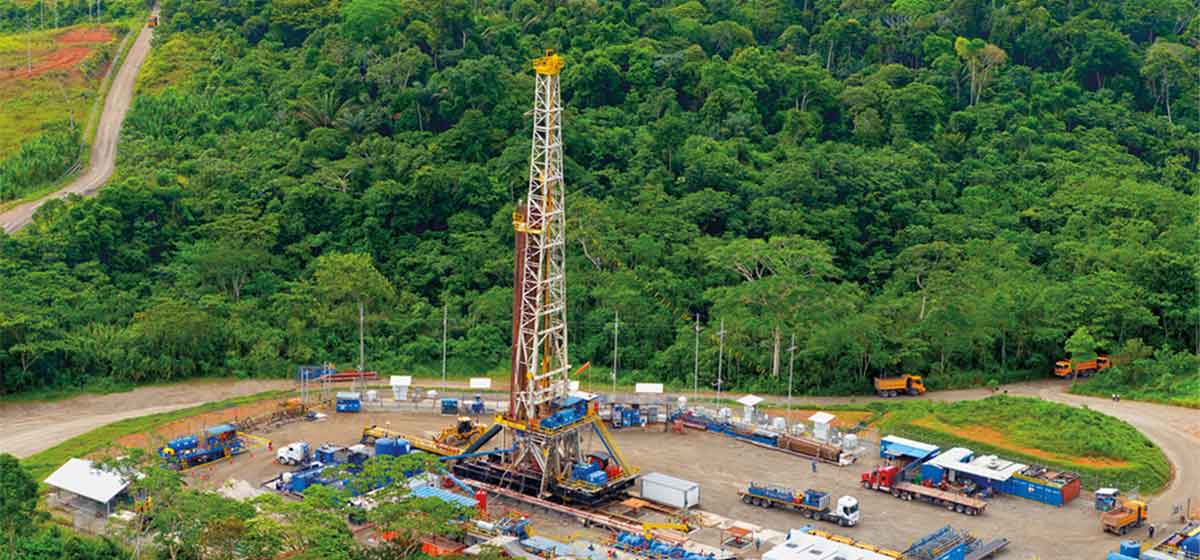Product Sheet EverCRETE CO2-Resistant Cement System
Extend cement barrier lifetime in reservoirs containing CO2.
CO2-resistant cement system

Because of its intrinsic low permeability, EverCRETE CO2-resistant cement system resists cement matrix attack from wet supercritical CO2 and water saturated with CO2 conditions. Accelerated reaction kinetics lead to a stabilized matrix within days of exposure to the CO2 environment, leading to stabilized mechanical properties.
EverCRETE system blends can be prepared locally using the standard bulk plant. The density can be tailored to well requirements, providing operational flexibility. Unlike other offerings, EverCRETE system is compatible with portland cement. The EverCRETE system can be used as a cement across potential CO2-producing formations or as the primary barrier in the wellbore for any in situ fluids, with a portland cement-based slurry used as a filler slurry for coverage of remaining casing. It can be prepared and pumped using standard equipment. Additionally, the cement can be engineered with self-healing properties that are reactive to CO2 exposure.
![Compressive strength evolution of portland cement and EverCRETE system samples with time in wet supercritical CO2 fluid and in CO2 saturated in water at 194 degF [90 degC] under 28 MPa of pressure.](https://www.slb.com/-/media/images/ce/cemcrete-cementing-technology/evercrete-ps-combo.ashx?h=1033&w=1140&la=en&hash=7B458203E06A767E2AE6091E15FC43C0)
![Compressive strength evolution of portland cement and EverCRETE system samples with time in wet supercritical CO2 fluid and in CO2 saturated in water at 194 degF [90 degC] under 28 MPa of pressure.](https://www.slb.com/-/media/images/ce/cemcrete-cementing-technology/evercrete-ps-combo.ashx?h=1033&w=1140&la=en&hash=7B458203E06A767E2AE6091E15FC43C0)

Our low-CO2 cement portfolio is part of our Transition Technologies that help minimize your well construction CO2 footprint. These cement solutions reduce environmental impact because they contain a reduced amount of embedded CO2 from their manufacturing process, helping you reach your sustainability goals by minimizing your upstream emissions footprint and preventing direct or unintended emissions.
LEARN MOREPortland cement systems are used conventionally for zonal isolation in wells. However, portland cement is thermodynamically unstable in CO2-rich environments and can degrade rapidly upon exposure to CO2 in the presence of water. As CO2-laden water diffuses into the cement matrix, the dissociated acid (H2CO3) reacts with the free calcium hydroxide and the calcium silicate hydrate (C-S-H) gel. The reaction products are soluble and migrate out of the cement matrix. Eventually, the compressive strength of the set cement decreases and the permeability and porosity increase, leading to loss of zonal isolation.
Well integrity has been identified as the biggest risk contributing to leakage of CO2 from underground carbon capture and storage sites. EverCRETE system enables efficient underground storage and keeps greenhouse gases out of the atmosphere for longer periods of time compared with ordinary portland cement.
While ordinary portland cement is not resistant to CO2 fluids and can degrade in a few weeks or less, the reaction between CO2 fluids and EverCRETE system results in a stable structure after two weeks, and mechanical and chemical properties are no longer affected. The system keeps greenhouse gases out of the atmosphere for up to six months or longer.
For wells in fields that use CO2 injection for EOR or may use it in the future, EverCRETE system reduces the risk of cement sheath degradation and leakage. It can be used to cement new CO2 injection wells or to plug and abandon injection or production wells at the end of the field life.
In case there is damage to the cement matrix and CO2 starts to migrate, the self-healing capabilities that can be incorporated in EverCRETE system will repair the crack, reestablishing the integrity of the well and recovering zonal isolation.
EverCRETE system can also be used as a cement across potential CO2-producing formations or as the primary barrier in the wellbore for in situ fluids after abandonment and permanent decommissioning.
